Instruction
Stickney: Sit on it (for a better backswing)
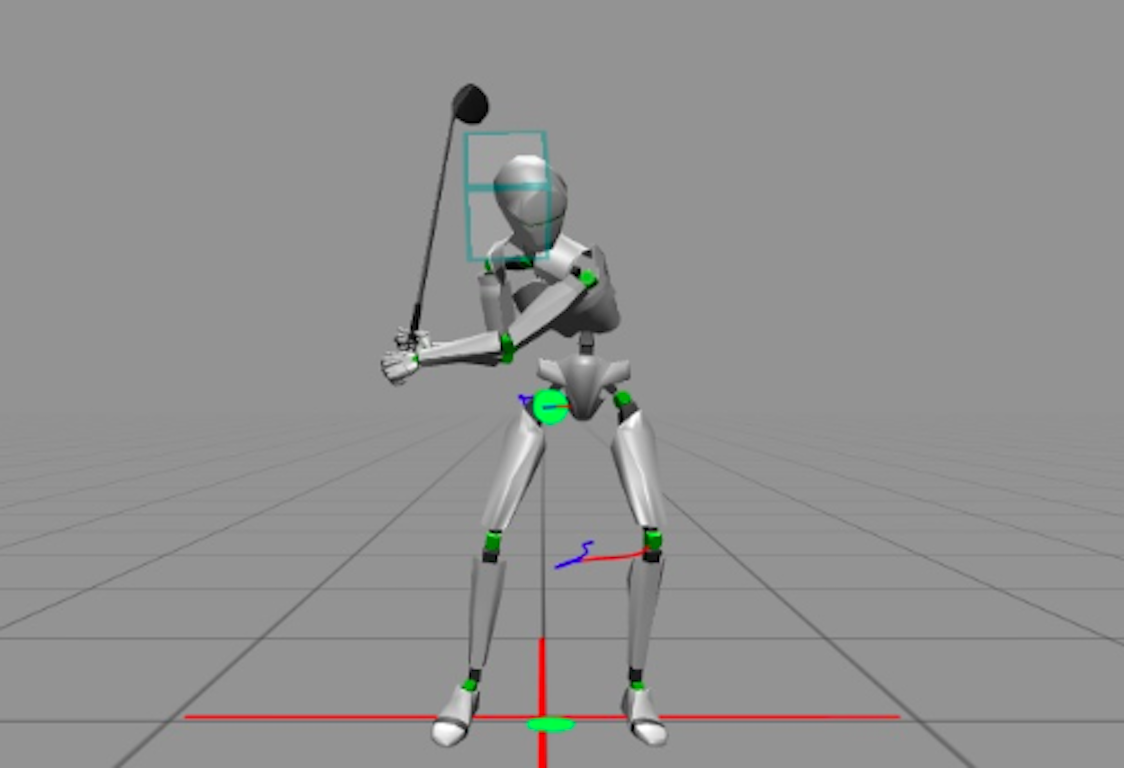
As we know golf, is a very tough sport and one that involves many moving pieces. Whenever something overreacts or moves too much on the way back, you end up playing catch-up on the way down. One of my favorite things to watch is how the head moves or doesn’t move on the backswing. Sure, you can have some movement, but you can’t have too much or you put yourself behind the eight ball.
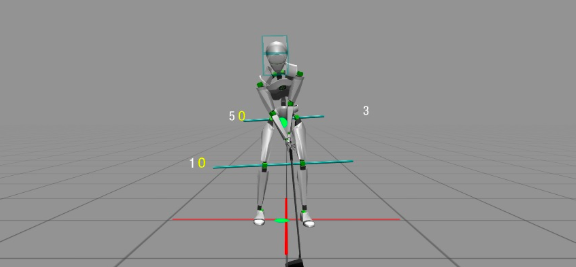
I have charted the head position of a tour player at address and we can see that this is a very normal set up position. It is one that looks positioned to do great things.
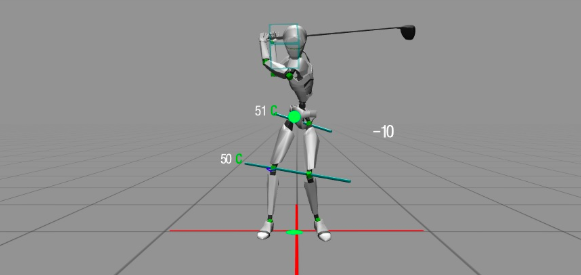
However, en route to the top, you can see that this player has put himself into a position where his rear knee straightened too rapidly off the start of his backswing. When this occurs the pelvis “runs out from under” the upper body on the backswing the hips will react and begin to slant downward. (You can see a -10 degree tilt versus 3 degrees the opposite way at address for you number people.)
This causes the head to move out in front of where it was at address. This is not a bad position for the irons but for a driver we have a pending issue. If you don’t make a compensation from here then the player will have an angle of attack that is too much downward through impact with their driver.
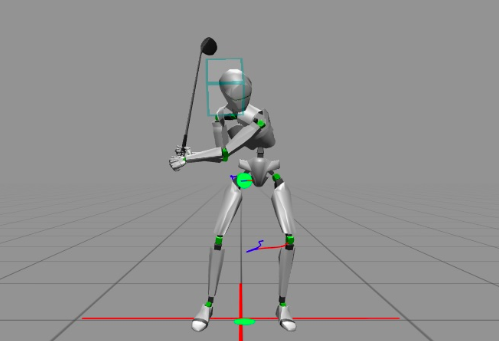
As the player moves into his transition, the hips have leveled as the rear shoulder lowers the club into delivery but the head and pelvis are still too far out in front of the ball. The only thing you can do from here is fire the lead side upwards and hope that your head falls back into the correct position. If so, you will have the correct angle of attack, if not, you will chop down on the ball causing your launch conditions to be faulty.
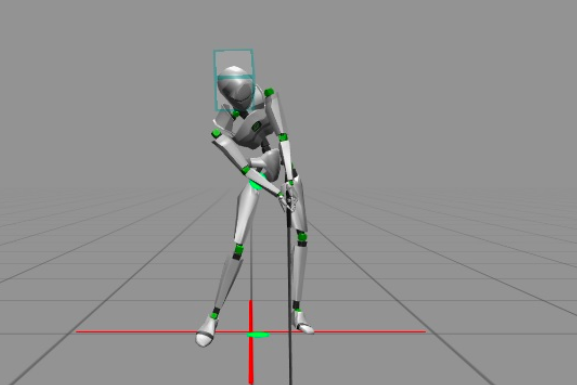
And as we see here that this is precisely what this player did at the very last minute…not the easiest way to swing the club but it is functional IF you make the right correction. So, now that you understand how simple things like the action of the lower body can cause your head to move and your angle of attack to become faulty, what is the secret to controlling your lower body?
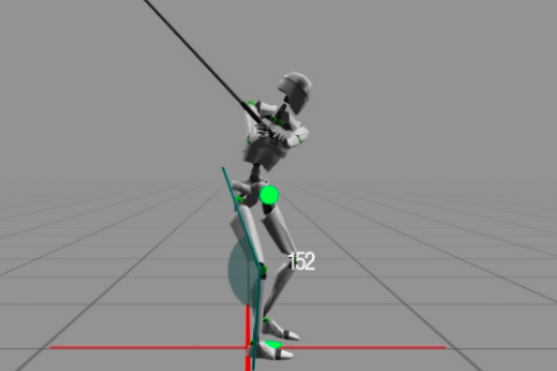
Just “sit” on the rear knee flex slightly longer during the backswing as you see here. This will slow down the tilting of the pelvis on backswing and thus your head will stay more in position en route to the top.
Personally, I teach both flexion and extension of the rear knee to the top, depending on what the player is wanting to do, so it really does not matter. However, what does matter is the rate at which it begins to straighten for those of you who do allow it to lengthen. I try to make most of my students hold the most of their address flex until the club moves between belt and chest high, any sooner and you risk the faulty pivot we saw above.
Therefore, take it from me and “sit on it” slightly longer for more quiet head motions as well as a more balanced backswing—your angle of attack will thank you!
- LIKE75
- LEGIT8
- WOW2
- LOL5
- IDHT3
- FLOP9
- OB7
- SHANK20
Instruction
Clement: Laid-off or perfect fade? Across-the-line or perfect draw?

Some call the image on the left laid off, but if you are hitting a fade, this could be a perfect backswing for it! Same for across the line for a draw! Stop racking your brain with perceived mistakes and simply match backswing to shot shape!
- LIKE0
- LEGIT0
- WOW0
- LOL0
- IDHT0
- FLOP0
- OB0
- SHANK0
Instruction
The Wedge Guy: The easiest-to-learn golf basic

My golf learning began with this simple fact – if you don’t have a fundamentally sound hold on the golf club, it is practically impossible for your body to execute a fundamentally sound golf swing. I’m still a big believer that the golf swing is much easier to execute if you begin with the proper hold on the club.
As you might imagine, I come into contact with hundreds of golfers of all skill levels. And it is very rare to see a good player with a bad hold on the golf club. There are some exceptions, for sure, but they are very few and very far between, and they typically have beat so many balls with their poor grip that they’ve found a way to work around it.
The reality of biophysics is that the body moves only in certain ways – and the particulars of the way you hold the golf club can totally prevent a sound swing motion that allows the club to release properly through the impact zone. The wonderful thing is that anyone can learn how to put a fundamentally sound hold on the golf club, and you can practice it anywhere your hands are not otherwise engaged, like watching TV or just sitting and relaxing.
Whether you prefer an overlap, interlock or full-finger (not baseball!) grip on the club, the same fundamentals apply. Here are the major grip faults I see most often, in the order of the frequency:
Mis-aligned hands
By this I mean that the palms of the two hands are not parallel to each other. Too many golfers have a weak left hand and strong right, or vice versa. The easiest way to learn how to hold the club with your palms aligned properly is to grip a plain wooden ruler or yardstick. It forces the hands to align properly and shows you how that feels. If you grip and re-grip a yardstick several times, then grip a club, you’ll see that the learning curve is almost immediate.
The position of the grip in the upper/left hand
I also observe many golfers who have the butt of the grip too far into the heel pad of the upper hand (the left hand for right-handed players). It’s amazing how much easier it is to release the club through the ball if even 1/4-1/2″ of the butt is beyond the left heel pad. Try this yourself to see what I mean. Swing the club freely with just your left hand and notice the difference in its release from when you hold it at the end of the grip, versus gripping down even a half inch.
To help you really understand how this works, go to the range and hit shots with your five-iron gripped down a full inch to make the club the same length as your seven-iron. You will probably see an amazing shot shape difference, and likely not see as much distance loss as you would expect.
Too much lower (right) hand on the club
It seems like almost all golfers of 8-10 handicap or higher have the club too far into the palm of the lower hand, because that feels “good” if you are trying to control the path of the clubhead to the ball. But the golf swing is not an effort to hit at the ball – it is a swing of the club. The proper hold on the club has the grip underneath the pad at the base of the fingers. This will likely feel “weak” to you — like you cannot control the club like that. EXACTLY. You should not be trying to control the club with your lower/master hand.
Gripping too tightly
Nearly all golfers hold the club too tightly, which tenses up the forearms and prevents a proper release of the club through impact. In order for the club to move back and through properly, you must feel that the club is controlled by the last three fingers of the upper hand, and the middle two fingers of the lower hand. If you engage your thumbs and forefingers in “holding” the club, the result will almost always be a grip that is too tight. Try this for yourself. Hold the club in your upper hand only, and squeeze firmly with just the last three fingers, with the forefinger and thumb off the club entirely. You have good control, but your forearms are not tense. Then begin to squeeze down with your thumb and forefinger and observe the tensing of the entire forearm. This is the way we are made, so the key to preventing tenseness in the arms is to hold the club very lightly with the “pinchers” — the thumbs and forefingers.
So, those are what I believe are the four fundamentals of a good grip. Anyone can learn them in their home or office very quickly. There is no easier way to improve your ball striking consistency and add distance than giving more attention to the way you hold the golf club.
More from the Wedge Guy
- The Wedge Guy: Golf mastery begins with your wedge game
- The Wedge Guy: Why golf is 20 times harder than brain surgery
- The Wedge Guy: Musings on the golf ball rollback
- LIKE86
- LEGIT13
- WOW6
- LOL1
- IDHT0
- FLOP4
- OB1
- SHANK8
Instruction
Clement: Stop ripping off your swing with this drill!

Not the dreaded headcover under the armpit drill! As if your body is defective and can’t function by itself! Have you seen how incredible the human machine is with all the incredible feats of agility all kinds of athletes are accomplishing? You think your body is so defective (the good Lord is laughing his head off at you) that it needs a headcover tucked under the armpit so you can swing like T-Rex?
- LIKE0
- LEGIT2
- WOW2
- LOL0
- IDHT0
- FLOP0
- OB0
- SHANK2
-

 19th Hole2 weeks ago
19th Hole2 weeks agoDave Portnoy places monstrous outright bet for the 2024 Masters
-

 19th Hole2 weeks ago
19th Hole2 weeks agoTiger Woods arrives at 2024 Masters equipped with a putter that may surprise you
-

 19th Hole2 days ago
19th Hole2 days agoJustin Thomas on the equipment choice of Scottie Scheffler that he thinks is ‘weird’
-

 19th Hole2 days ago
19th Hole2 days ago‘Absolutely crazy’ – Major champ lays into Patrick Cantlay over his decision on final hole of RBC Heritage
-

 19th Hole3 weeks ago
19th Hole3 weeks agoReport: Tiger Woods has ‘eliminated sex’ in preparation for the 2024 Masters
-

 19th Hole1 week ago
19th Hole1 week agoTwo star names reportedly blanked Jon Rahm all week at the Masters
-

 19th Hole1 week ago
19th Hole1 week agoReport: LIV Golf identifies latest star name they hope to sign to breakaway tour
-

 19th Hole1 week ago
19th Hole1 week agoNeal Shipley presser ends in awkward fashion after reporter claims Tiger handed him note on 8th fairway





















Another Tom
Feb 17, 2022 at 5:39 am
Thanks for the information Tom.
I would say setting up with a bit of spine tilt also helps keep the head from being too far target side. I remember years ago you wrote an article on spine tilt at address and handicap level. Better players had some spine tilt away from the target at address, and the less skilled the golfer the less they had. These days there are some that say that good players / pros are straight up and down, and don’t spine tilt away (Athletic Motion Golf / AMG guys), but when I look at the gears examples they use I still see spine tilt away (blue spine line), and when you look at pictures and video of tour pros at address the tilt of their shirt buttons are suggestive of spine tilt at setup.
joe
Feb 22, 2020 at 6:23 pm
such a load of crap.
geohogan
Feb 22, 2020 at 4:46 pm
Head and hips counter balance in the coronal plane.
All the great ball strikers had their butt hole pointing behind the lead heel at the top of the BS. To counter balance, simply “fart behind the left heel” prior to beginning of the BS.
erformance: GOLF; Gerry Hogan, 1992.
geohogan
Feb 23, 2020 at 7:49 pm
Dont think it can stated any more succinct than by Lane Holt; simply rotating the trail thumb clockwise is key to the BS and DS:
“When you rotate your right thumb back you will notice your right PALM is facing upward. If you pull your right hand straight down to the ground with that palm up, your right elbow goes down with it into your right hip area where it must be during your DS. Hands will be close to your torso and your balance mechanisms will not be threatened and engage. Then you just pull that lever down and around close to your torso”
Speedy
Feb 22, 2020 at 2:23 pm
Good instruction, Tom. A helpful aid for keeping it altogether.